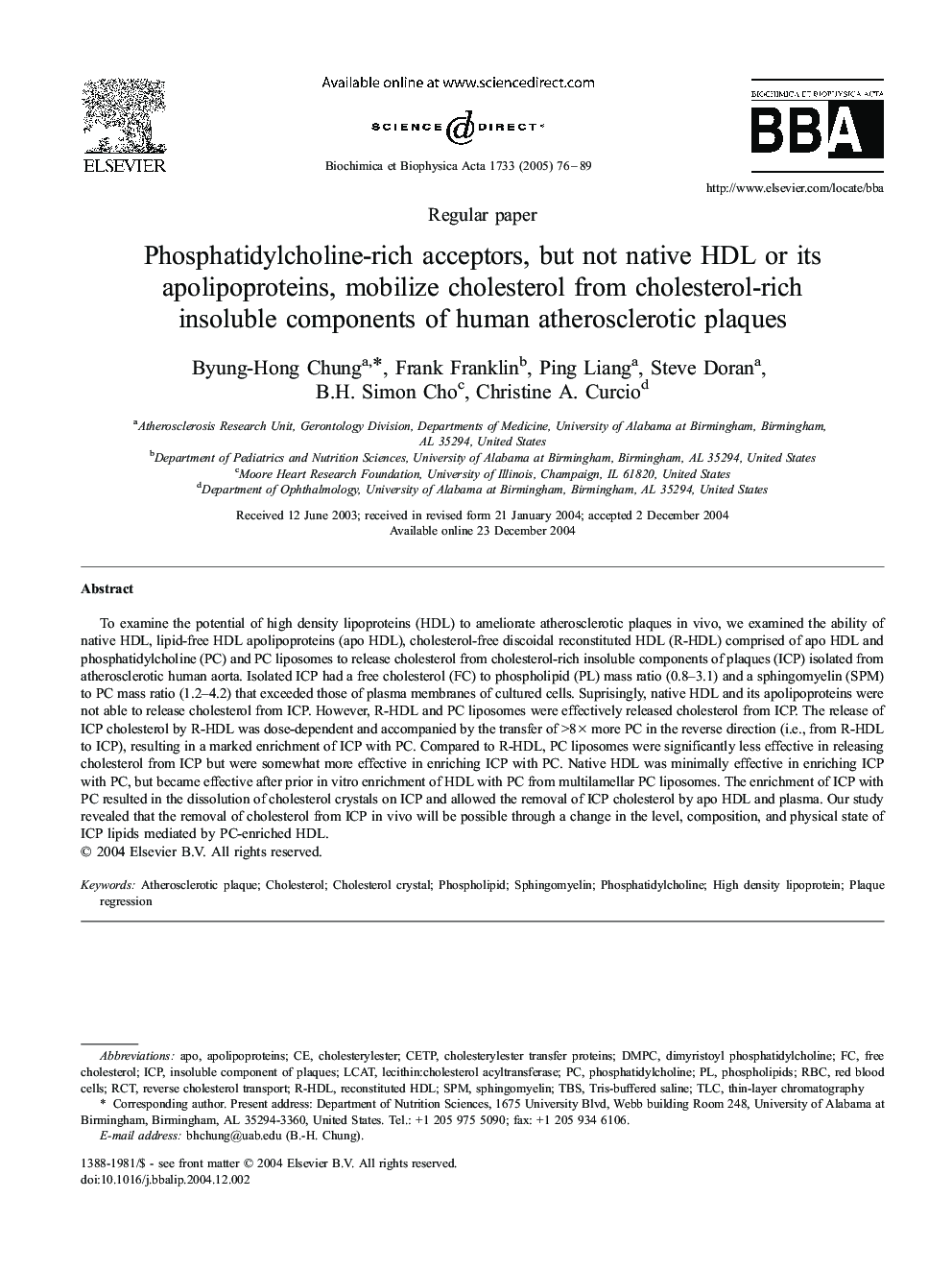| Article ID | Journal | Published Year | Pages | File Type |
|---|---|---|---|---|
| 9886606 | Biochimica et Biophysica Acta (BBA) - Molecular and Cell Biology of Lipids | 2005 | 14 Pages |
Abstract
To examine the potential of high density lipoproteins (HDL) to ameliorate atherosclerotic plaques in vivo, we examined the ability of native HDL, lipid-free HDL apolipoproteins (apo HDL), cholesterol-free discoidal reconstituted HDL (R-HDL) comprised of apo HDL and phosphatidylcholine (PC) and PC liposomes to release cholesterol from cholesterol-rich insoluble components of plaques (ICP) isolated from atherosclerotic human aorta. Isolated ICP had a free cholesterol (FC) to phospholipid (PL) mass ratio (0.8-3.1) and a sphingomyelin (SPM) to PC mass ratio (1.2-4.2) that exceeded those of plasma membranes of cultured cells. Suprisingly, native HDL and its apolipoproteins were not able to release cholesterol from ICP. However, R-HDL and PC liposomes were effectively released cholesterol from ICP. The release of ICP cholesterol by R-HDL was dose-dependent and accompanied by the transfer of >8Ã more PC in the reverse direction (i.e., from R-HDL to ICP), resulting in a marked enrichment of ICP with PC. Compared to R-HDL, PC liposomes were significantly less effective in releasing cholesterol from ICP but were somewhat more effective in enriching ICP with PC. Native HDL was minimally effective in enriching ICP with PC, but became effective after prior in vitro enrichment of HDL with PC from multilamellar PC liposomes. The enrichment of ICP with PC resulted in the dissolution of cholesterol crystals on ICP and allowed the removal of ICP cholesterol by apo HDL and plasma. Our study revealed that the removal of cholesterol from ICP in vivo will be possible through a change in the level, composition, and physical state of ICP lipids mediated by PC-enriched HDL.
Keywords
Related Topics
Life Sciences
Biochemistry, Genetics and Molecular Biology
Biochemistry
Authors
Byung-Hong Chung, Frank Franklin, Ping Liang, Steve Doran, B.H. Simon Cho, Christine A. Curcio,
